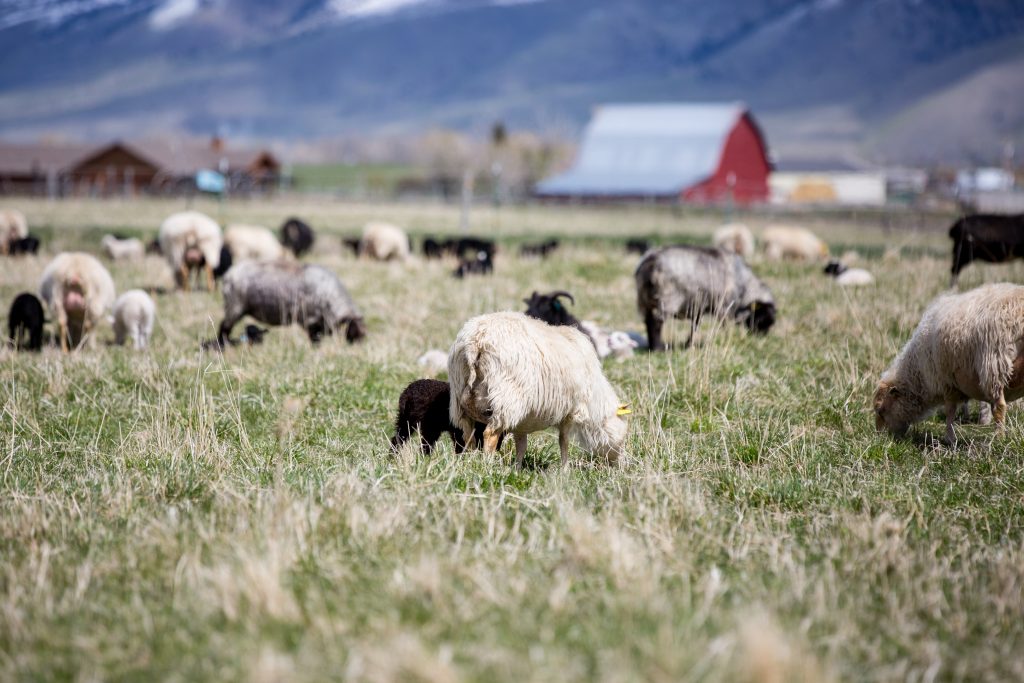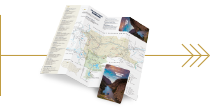The Finer Points of Fiber Art
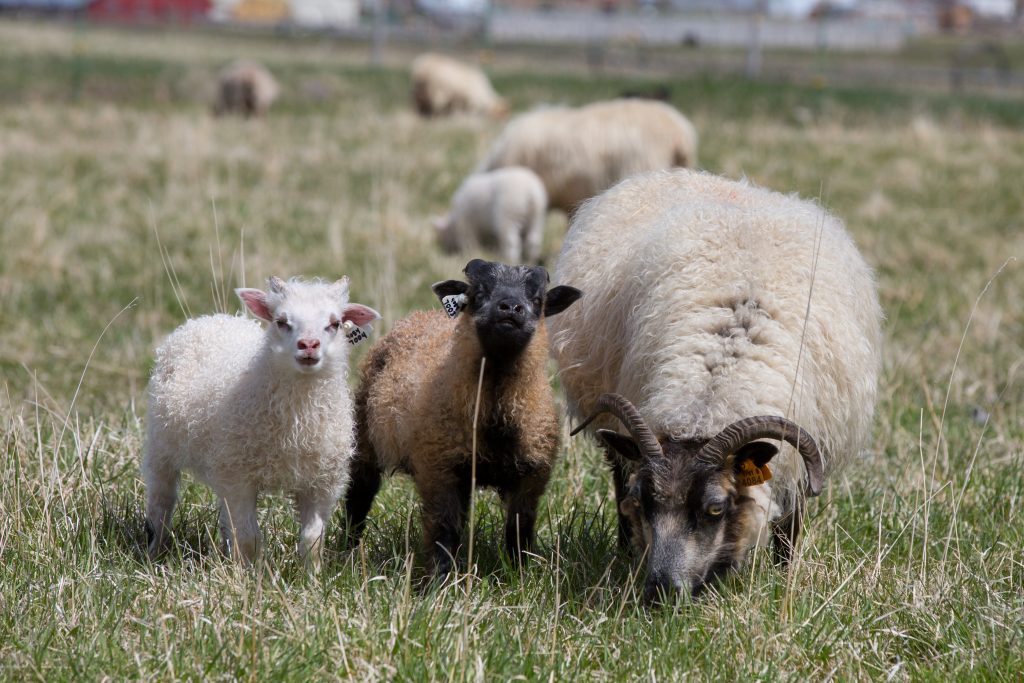
Story and Photos by Seonaid B. Campbell
The name Sweet Grass conjures up thoughts of pastoral landscapes and enticing scents. Indeed, the 1,862-square-mile county in south-central Montana claims both. Here, the Yellowstone River flows, native sweet grass grows, and the rugged Crazy Mountains loom. It is a stunning and varied landscape that has been sheep ranching country since the early 1880s.
Now, imagine a Montana landscape depicted as an eight-foot-tall wall hanging comprising felted wool of various natural colors and textures, with lines that form overlapping horizons and pull you in. It’s called ‘fiber art’ (this piece by artist Meghan Purcell of Livingston), and on May 9th, the wool-centric history of Sweet Grass County and the artists, who use fibers such as thread, silk, bamboo, alpaca, wool, and other fiber-like materials, will merge at the first annual Crazy Mountain Fiber Festival.
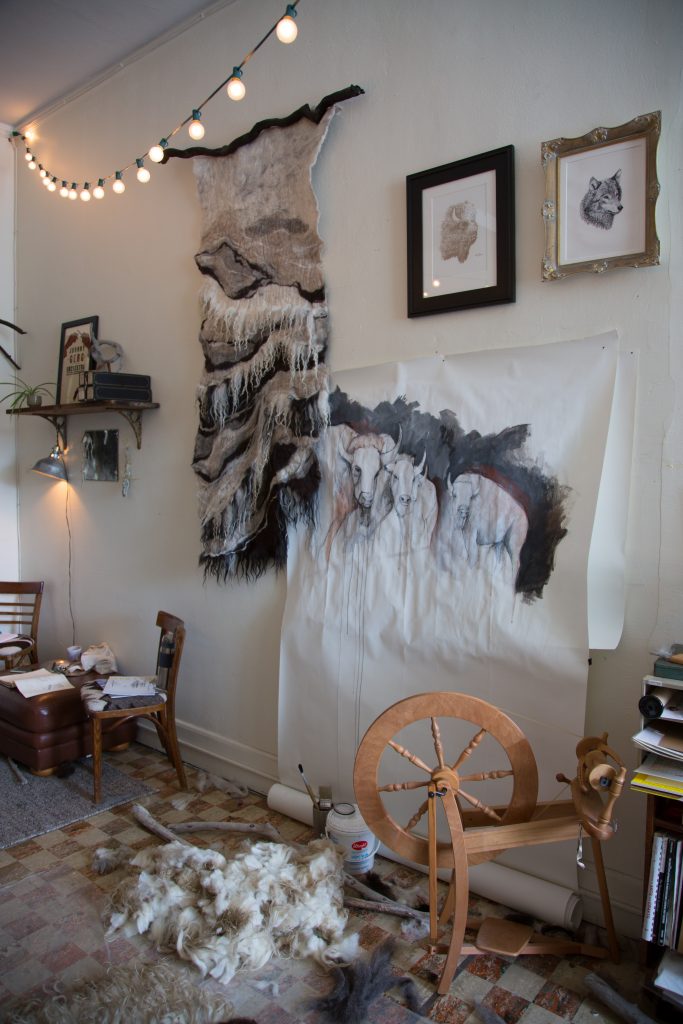
Wool is not the only fiber adopted by artists who knit, weave, stitch, spin, crochet, dye, and twist fibers into textiles and sculptures, but it is likely the most popular around Big Timber, the county seat of Sweet Grass. It is also the chosen medium of Shirley Halverson, the inspired sheep ranching local who brainstormed the Festival.
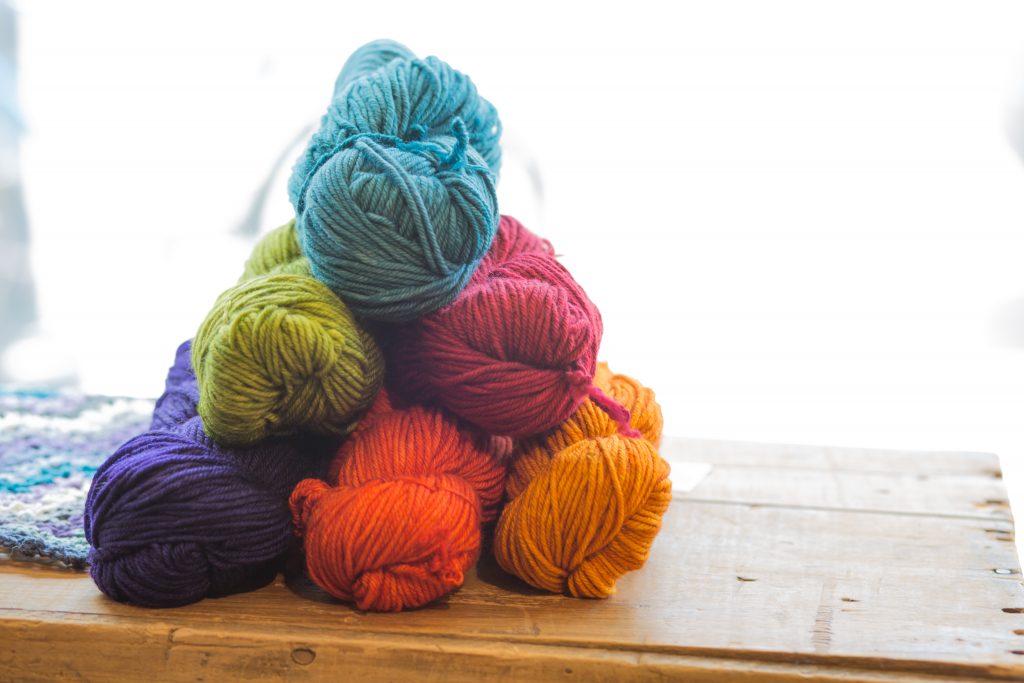 Halverson grew up on the Elk Horn dude ranch in the Gallatin River Canyon, which her parents owned; she then married fourth-generation sheep rancher Kevin Halverson, whose Norwegian great grandfather brought sheep to Big Timber in 1883. Shirley adopted his lifestyle and together they ranch Targhee/Rambouillet-cross sheep for their meat and fiber.
Halverson grew up on the Elk Horn dude ranch in the Gallatin River Canyon, which her parents owned; she then married fourth-generation sheep rancher Kevin Halverson, whose Norwegian great grandfather brought sheep to Big Timber in 1883. Shirley adopted his lifestyle and together they ranch Targhee/Rambouillet-cross sheep for their meat and fiber.
A spinner of wool, who also knits and crochets, Shirley Halverson didn’t embrace the medium until her children were grown. “I made a bucket list,” she says. “It was either play the stand-up bass, or spin.” She tried both, but lacking a band (although apparently not musical talent), she forwent the bass and chose to work with fiber. “Being a producer (of sheep) I used to think, I should learn more about where wool goes,” she says.
The mission to educate herself and others is what prompted her to found this first annual Festival. The event will showcase artwork by local and regional fiber artists, and feature demonstrations in needle felting, dying wool, and weaving. A sheep shearing demonstration and tours of the Crazy Mountain Museum and historic wool house abutting the railroad tracks are also scheduled.
In creating the event, she enlisted the help of expert fiber artist Connie Simonich, another local who grew up ranching sheep. Simonich is a weaver, knitter, and spinner, who also practices felting, rug hooking and, according to her on-line bio, “everything wool.” Connie will teach fiber spinning classes at the Festival, as well as methods for preparing wool.
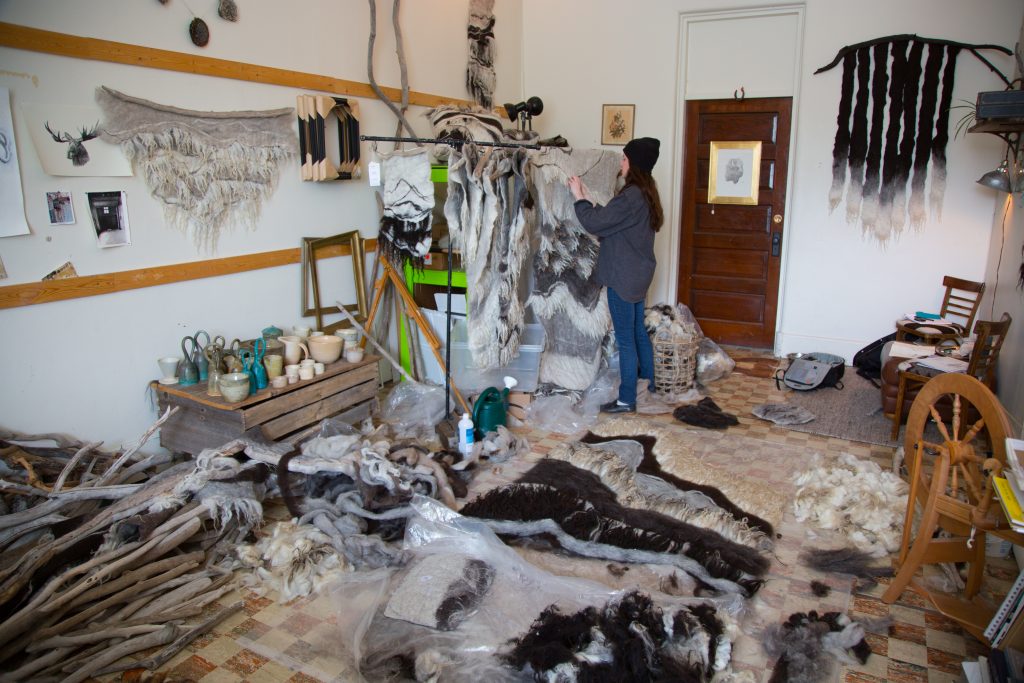
Meghan Purcell, in her studio
Fiber artist Meghan Purcell of Livingston is much newer to the medium, but no less talented. One day at the Livingston Farmer’s Market, Purcell was immediately enamored with Icelandic wool sold by Per and Barbara Gunness of Wolf Ridge Icelandics. That fateful day she turned to her husband Jeff and said, “I’m going to make art out of this!”
Purcell’s curiosity for what she could do with this wool grew. “I thought of felting, but had no experience with it. [There was] a lot of wasted wool in the process of learning,” she says with a laugh. Purcell had been to art school, but had never worked with fiber. She taught herself how to felt and developed a relationship with the Gunnesses, sourcing wool from them. Although the skill is new to her, it is, in fact, an ancient art form. According to Purcell, “Felted fabric was the earliest known to be made.”
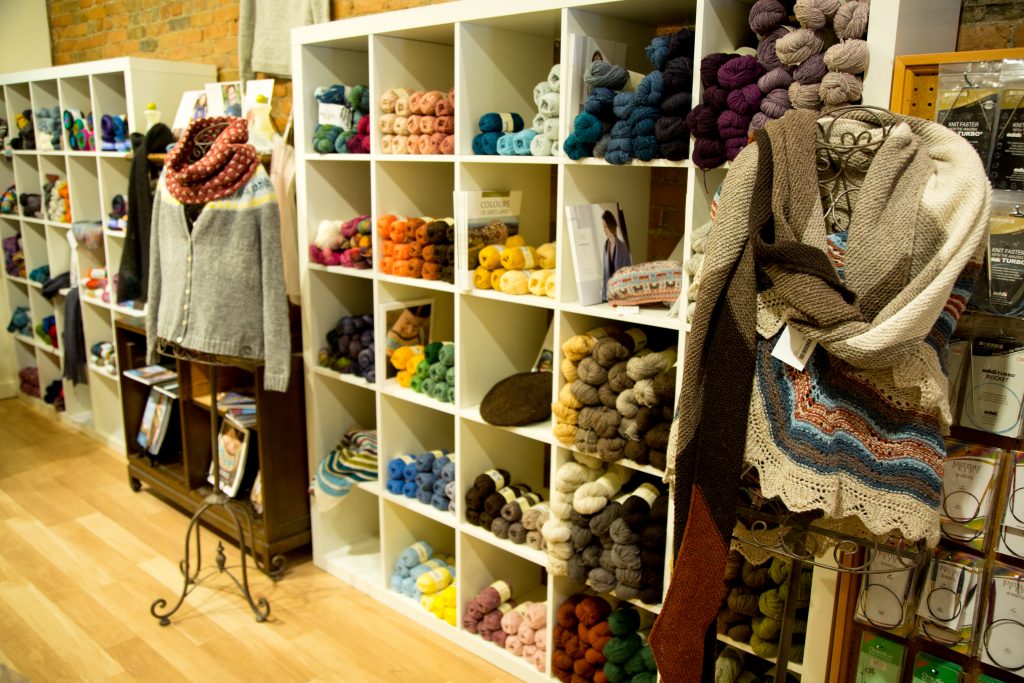
Stix, Downtown Bozeman, MT
Historically, we think of fiber arts as utilitarian works like textiles or garments. For example, our grandmothers knitted us scarves; the Romans apparently felted wool “armor” to block arrows from penetrating; and we envision spectacular Medieval tapestries hung to insulate cold stonewalls, which as artworks achieved a pinnacle of beauty.
Think, for example, of the famous seven “Unicorn Tapestries,” which are, according to the Metropolitan Museum of Art where they are housed, “among the most beautiful and complex works of art from the late Middle Ages that survive.” These luxurious works of art depict “scenes associated with a hunt for the elusive, magical unicorn” and were woven of wool and silk, with silver and gilded threads.
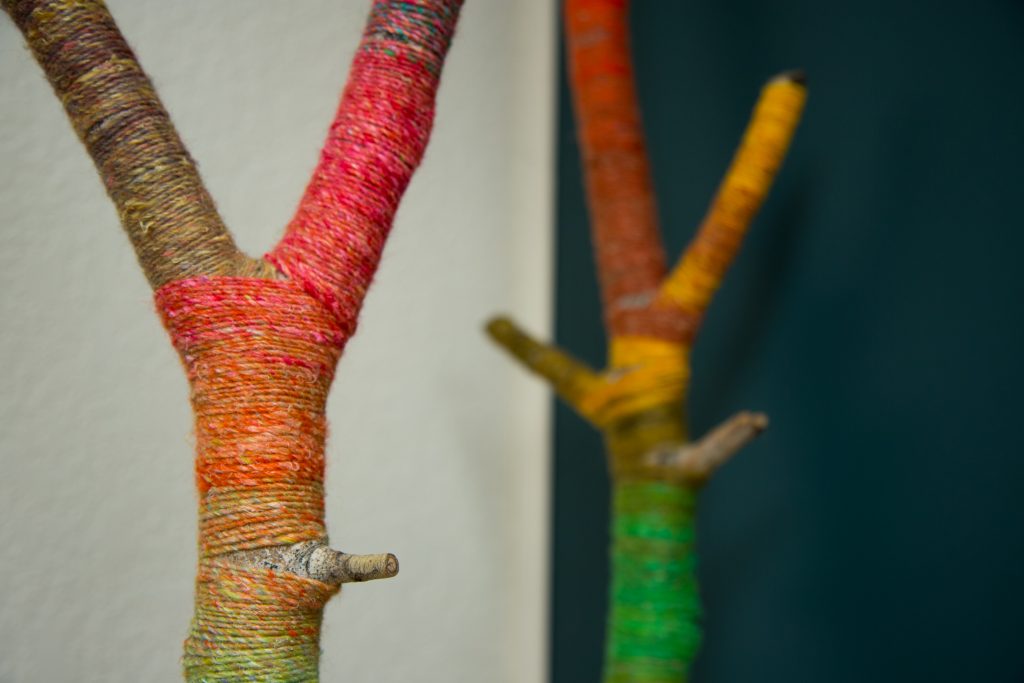
Fiber arts have drastically evolved since those ancient times. Originally thought of as a craft, fiber art underwent a revolution as Modernism hit the art world. Artists began to make sculptures with fibers, creating abstract shapes and patters, or forms inspired by nature. These fiber revolutionaries broke down the division between artisans and artists; although fiber arts in the 1960’s were an important part of the feminist moment, the form did not remain exclusive. Halverson describes a man she met at a fiber festival, who spins his own wool and makes his own braided horse halters.
For many of the Montana fiber artists, Montana itself is an inspiration. “It took me probably a year and a half to develop my style, which is largely influenced by the landscape,” says Purcell, who is currently at work on a series of six monumental wall hangings, each dedicated to a different Montana sheep ranch where she sourced wool. Since January, she has been visiting these ranches in cahoots with Whitefish photographer Lauren Lipscomb.
Their tandem art show, Behind the Wool, which takes place at the Emerson Cultural Center in Bozeman on May 12th, depicts in wool and images the ranches they have visited. “We were interested in their methods, the future of farming in Montana, and what sustainable practices they’ve had to adapt to maintain,” says Purcell.
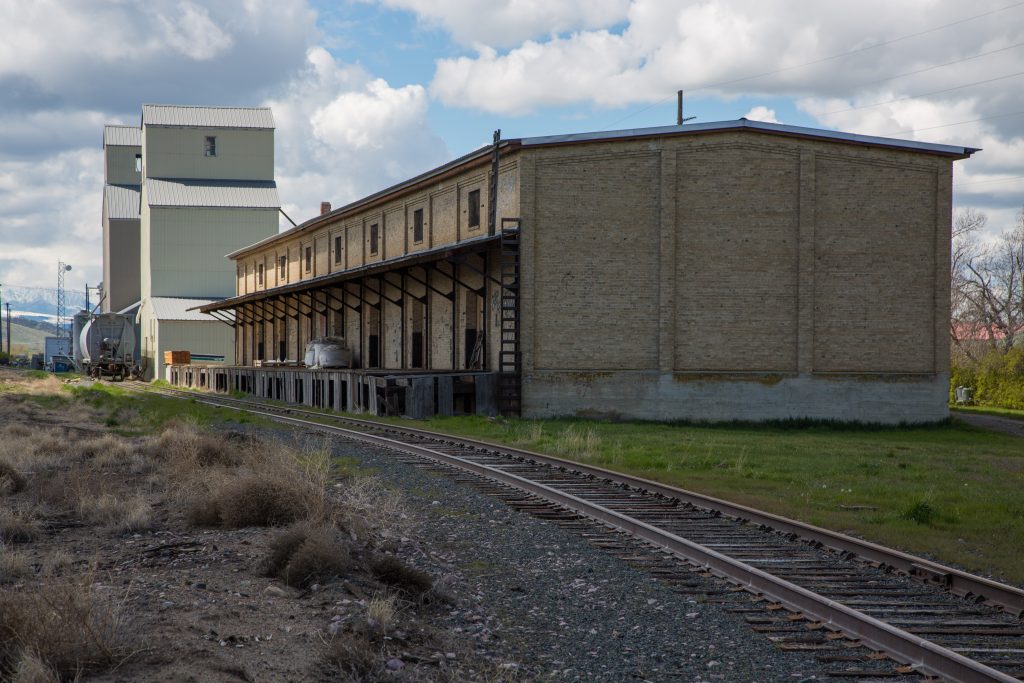
The wool house, Big Timber, MT
Shirley’s husband Kevin knows a bit or two about sustainable sheep ranching. He also knows that his family’s and Sweet Grass County’s history have been woven together with fiber from sheep. “In about 1907, Big Timber was the world’s largest exporter of wool. One million pounds of wool were shipped via railroad,” he explains. Of course, wool is only one of a multitude of fibers that artists utilize, but it’s one that is readily available in Montana. Given Big Timber’s history, this town seems like a fitting place for the Crazy Mountain Fiber Festival.
